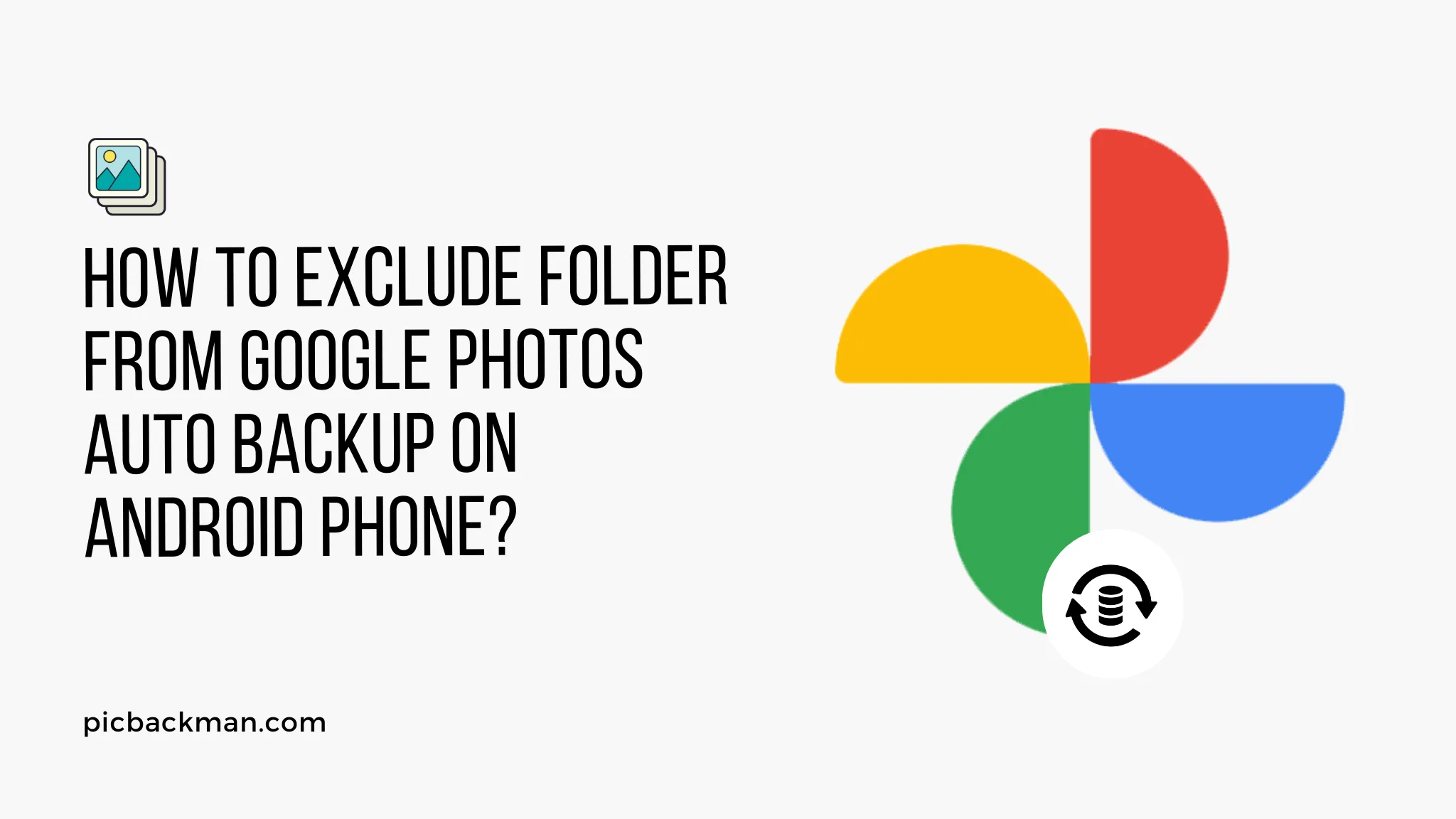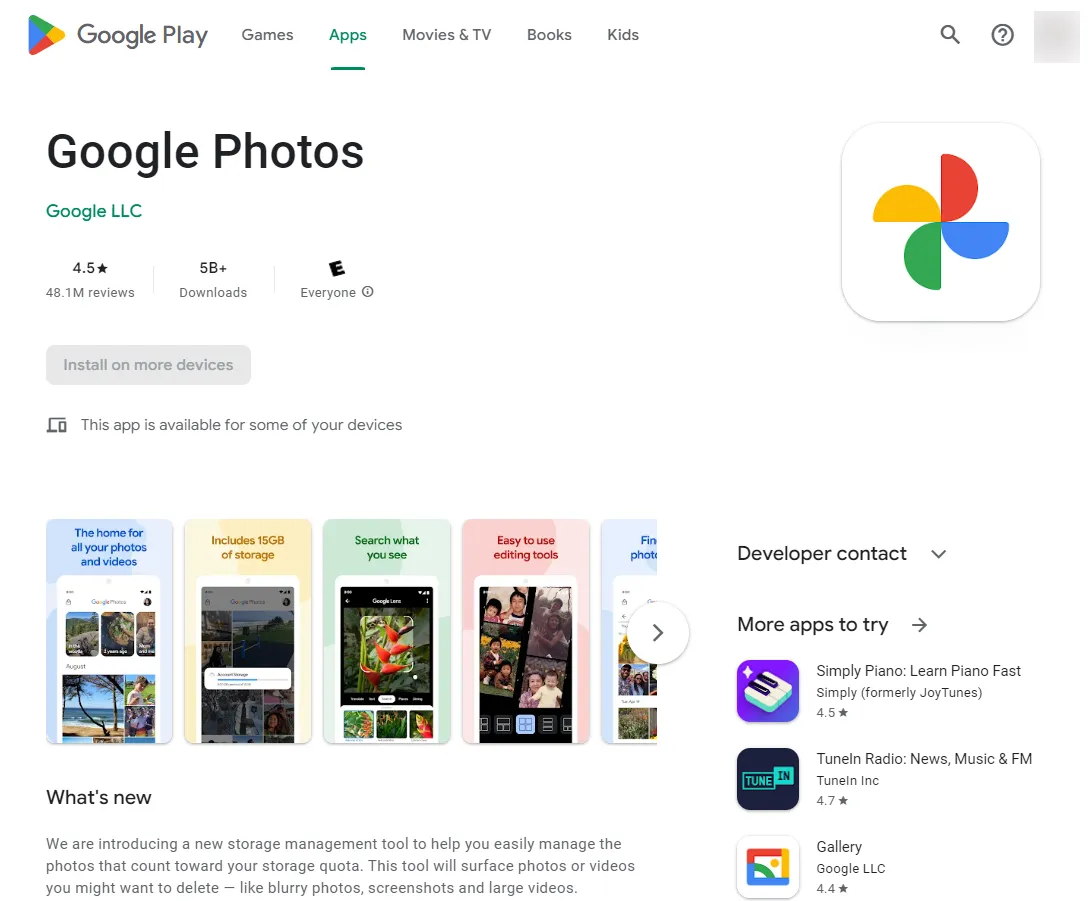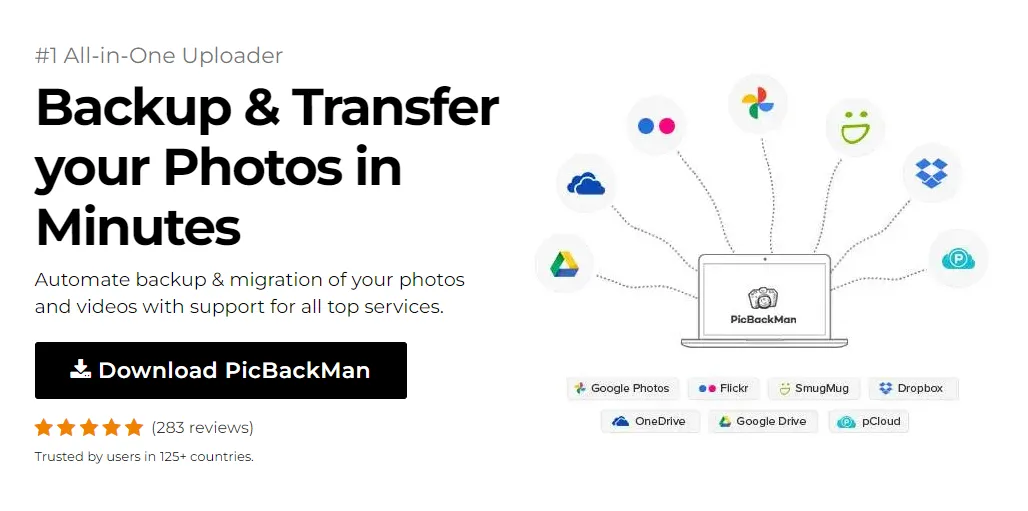
Why is it the #1 bulk uploader?
- Insanely fast!
- Maintains folder structure.
- 100% automated upload.
- Supports RAW files.
- Privacy default.
How can you get started?
Download PicBackMan and start free, then upgrade to annual or lifetime plan as per your needs. Join 100,000+ users who trust PicBackMan for keeping their precious memories safe in multiple online accounts.
“Your pictures are scattered. PicBackMan helps you bring order to your digital memories.”
How to Exclude Folder from Google Photos Auto Backup on Android Phone?


In today's digital age, Google Photos has become an indispensable tool for Android users to automatically back up their precious memories. However, there may be some folders on your Android phone that you don't want to be included in the automatic backup process. Whether it's sensitive documents, large files, or simply irrelevant images, you might want to exclude them from being uploaded to Google Photos. In this article, we'll guide you through the simple steps to exclude a folder from Google Photos' auto backup feature.
1. Understanding Google Photos Auto Backup
Google Photos offers a convenient auto backup feature that automatically uploads all the photos and videos on your Android device to the cloud. This ensures that your memories are safe, even if your phone is lost or damaged. However, some users might want to exclude certain folders from this process for various reasons, such as saving storage space or preserving privacy.
2. Identifying Folders for Exclusion
Before proceeding to exclude folders, you need to identify the specific folders on your Android phone that you want to exclude from Google Photos' auto backup. Make a list of the directories containing files that you wish to keep away from the automatic backup process.
3. Disabling Auto Backup for Specific Folders
To exclude a folder from Google Photos' auto backup, follow these simple steps:
Step 1: Open Google Photos
Launch the Google Photos app on your Android phone. If you don't have it installed, download it from the Google Play Store.
Step 2: Access Settings
Tap on the three horizontal lines in the top-left corner of the screen to access the app's menu. From the menu, select "Settings."
Step 3: Select "Back up & sync"
In the settings menu, tap on "Back up & sync" to manage the backup options.
Step 4: Exclude Folders
Find the "Back up device folders" option and tap on it. You will see a list of folders currently being backed up.
Step 5: Deselect Folders for Exclusion
Browse through the list and deselect the folders you want to exclude from the auto backup process. This action will prevent these folders from being uploaded to Google Photos.
Step 6: Save Changes
After deselecting the desired folders, save your changes by tapping the "Done" button or a similar option that appears on your device.
4. The Benefits of Exclusion
Excluding folders from Google Photos' auto backup can provide several benefits. Firstly, it helps you save storage space on your Google account, as large or irrelevant files won't occupy unnecessary cloud space. Secondly, it can help protect your privacy by preventing sensitive documents or personal photos from being uploaded to the cloud.
5. How to Re-enable Auto Backup for Excluded Folders
If you change your mind and want to include previously excluded folders in the auto backup process, follow these steps:
Step 1: Open Google Photos
Launch the Google Photos app on your Android phone.

Step 2: Access Settings
Tap on the three horizontal lines in the top-left corner, then select "Settings."
Step 3: Select "Back up & sync"

Tap on "Back up & sync" to access the backup options.
Step 4: Include Folders for Backup
In the "Back up device folders" section, select the folders you wish to include in the auto backup process.
Step 5: Save Changes
After selecting the desired folders, save your changes.
6. The Importance of Regular Manual Backups
While Google Photos' auto backup is highly convenient, it's crucial not to solely rely on it. Performing regular manual backups of your important files to an external drive or computer ensures an additional layer of security for your cherished memories.
7. Best Practices for Organizing Folders
To optimize your Google Photos experience, establish a systematic approach to folder organization. Categorize your photos into relevant folders, making it easier to locate specific memories in the future.
8. Managing Storage Space on Google Photos
As your photo library grows, managing storage space becomes vital. Regularly review and delete unnecessary photos or videos to free up space for new memories.
9. Troubleshooting Auto Backup Issues
If you encounter any issues with Google Photos' auto backup, such as failed uploads or missing files, check your internet connection, ensure you have sufficient storage space, and update the app to the latest version.
10. Embracing the Full Potential of Google Photos
Google Photos offers a wealth of features beyond auto backup, such as creating albums, collages, and animations. Explore these options to enhance your photo-sharing experience.
11. Protecting Privacy and Security
While Google Photos provides secure cloud storage, it's essential to be cautious with what you upload. Avoid sharing sensitive or confidential information through the platform.
12. Limitations and Considerations
While Google Photos is a powerful tool, it may have some limitations. For example, Google may compress high-quality images to save storage space, so consider using the "Original quality" option if you prefer no compression.
13. Exploring Alternative Backup Solutions
If Google Photos doesn't fully meet your needs, consider exploring alternative cloud storage and backup solutions available in the market.
14. Quick Tip to ensure your videos never go missing
Videos are precious memories and all of us never want to ever lose them to hard disk crashes or missing drives. PicBackMan is the easiest and simplest way to keep your videos safely backed up in one or more online accounts.
Simply download PicBackMan (it's free!), register your account, connect to your online store and tell PicBackMan where your videos are - PicBackMan does the rest, automatically. It bulk uploads all videos and keeps looking for new ones and uploads those too. You don't have to ever touch it.
15. Conclusion
In conclusion, Google Photos' auto backup feature is an excellent way to safeguard your cherished memories. However, if you wish to exclude certain folders from the automatic backup process, follow the straightforward steps outlined in this article. By customizing your backup settings, you can optimize storage space and maintain better control over your privacy. Remember to combine auto backup with regular manual backups for maximum data protection.
FAQs
How do I Backup only certain folders in Google Photos?
To back up only specific folders in Google Photos, follow these steps:
- Open the Google Photos app on your Android device.
- Tap on the three horizontal lines in the top-left corner to access the menu.
- Select "Settings" from the menu.
- Tap on "Back up & sync."
- In the "Back up device folders" section, you will see a list of folders.
- Toggle off the folders you don't want to back up.
- Tap the "Done" button to save your changes.
How do I stop Google Photos uploading to a folder?
To prevent Google Photos from uploading to a specific folder, follow these steps:
- Launch the Google Photos app on your Android device.
- Tap the three horizontal lines in the top-left corner to access the menu.
- Select "Settings" from the menu.
- Tap on "Back up & sync."
- Find the "Back up device folders" option and tap on it.
- Deselect the folder you want to exclude from uploading.
- Save your changes by tapping the "Done" button.
How do I exclude a folder from my gallery?
To exclude a folder from your gallery, you can follow these steps:
- Open the File Manager app on your Android device.
- Navigate to the folder you want to exclude.
- Create a new file in that folder and name it ".nomedia" (without quotes).
- The ".nomedia" file will hide the folder from your gallery.
How do I exclude folders from Google Sync?
If you want to exclude folders from Google Sync (Google Drive), you can use the "Selective Sync" feature on your computer. Here's how:
- Open the Google Drive app on your computer.
- Click on the gear icon (Settings) in the top-right corner.
- Select "Preferences" or "Settings."
- Go to the "Sync" tab.
- Click on "Choose folders" or "Sync only these folders."
- Deselect the folders you want to exclude from syncing.
- Click "Apply" or "OK" to save your changes.
How to remove a folder without deleting its contents on Google Drive?
To remove a folder from Google Drive without deleting its contents, follow these steps:
- Open Google Drive on your computer.
- Find the folder you want to remove.
- Right-click on the folder.
- Select "Remove" or "Remove from My Drive."
- The folder will be removed from your Drive, but its contents will remain intact.
Will deleting a Google Drive folder delete it for everyone?
Yes, if you delete a folder from Google Drive, it will be deleted for everyone who has access to that folder. Deleting a folder is a permanent action, so be cautious when removing folders from shared drives or folders with multiple collaborators.






